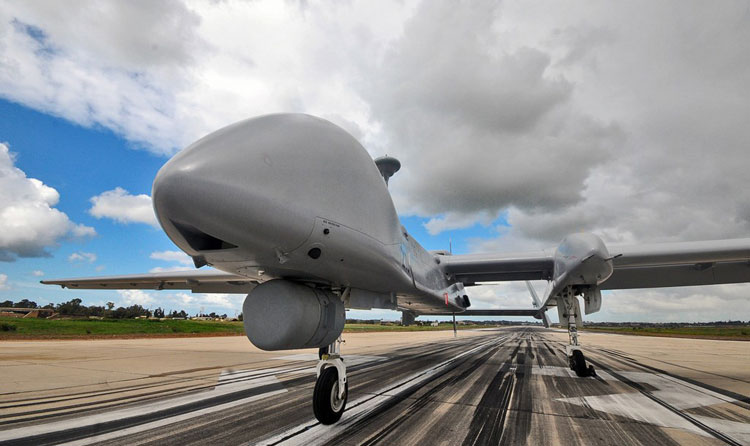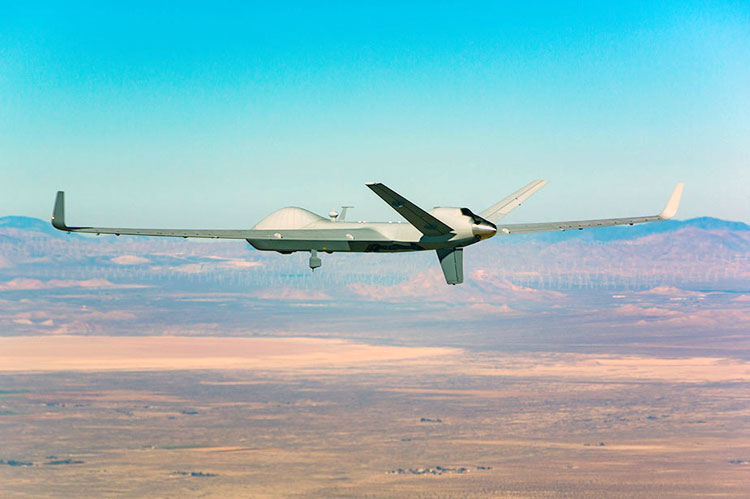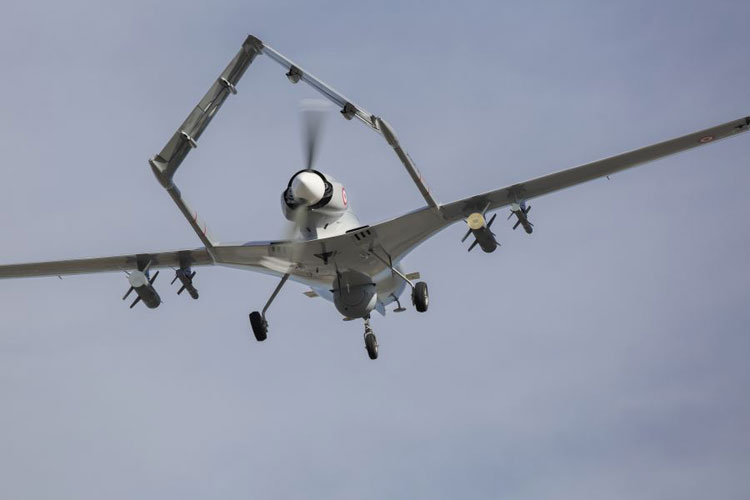INDIAN ARMED FORCES CHIEFS ON OUR RELENTLESS AND FOCUSED PUBLISHING EFFORTS

The insightful articles, inspiring narrations and analytical perspectives presented by the Editorial Team, establish an alluring connect with the reader. My compliments and best wishes to SP Guide Publications.

"Over the past 60 years, the growth of SP Guide Publications has mirrored the rising stature of Indian Navy. Its well-researched and informative magazines on Defence and Aerospace sector have served to shape an educated opinion of our military personnel, policy makers and the public alike. I wish SP's Publication team continued success, fair winds and following seas in all future endeavour!"

Since, its inception in 1964, SP Guide Publications has consistently demonstrated commitment to high-quality journalism in the aerospace and defence sectors, earning a well-deserved reputation as Asia's largest media house in this domain. I wish SP Guide Publications continued success in its pursuit of excellence.
- A leap in Indian aviation: Prime Minister Modi inaugurates Safran's Global MRO Hub in Hyderabad, Calls It a Milestone
- All about HAMMER Smart Precision Guided Weapon in India — “BEL-Safran Collaboration”
- India, Germany deepen defence ties as High Defence Committee charts ambitious plan
- True strategic autonomy will come only when our code is as indigenous as our hardware: Rajnath Singh
- EXCLUSIVE: Manish Kumar Jha speaks with Air Marshal Ashutosh Dixit, Chief of Integrated Defence Staff (CISC) at Headquarters, Integrated Defence Staff (IDS)
- Experts Speak: G20 Summit: A Sign of Global Fracture
Advanced Herons for LAC
The Heron TP equipped with automatic taxi-take-off and landing (ATOL) and satellite communication (SATCOM) systems has all weather capability and will help the Indian Army enhance its surveillance capabilities along the Line of Actual Control (LAC) with China
 |
The Author is Former Director General of Information Systems and A Special Forces Veteran, Indian Army |

According to news reports of May 26, 2021, the Indian Army (IA) is set to lease four Heron medium-altitude long-endurance (MALE) unmanned aerial vehicles (UAVs) from Israel for a three-year period with the option to extend the lease further for another two years. The agreement to acquire the drones from Israel was reportedly concluded in mid-January this year. The first two of these drones under this agreement are expected to arrive in India during August 2021.
Due to the surprise Chinese aggression in May-June 2020, the vital need for enhancing surveillance capabilities was realised. With the continued standoff between the IA and PLA which isn’t likely to get easily resolved, if at all, because of China backtracking on its promise to disengage, the Indian Government granted new ‘emergency powers’ to the defence forces to enable them buy equipment and systems worth 500 crore to upgrade their combat capabilities. These four Heron MALE UAVs are reportedly being leased under this arrangement though the cost involved in the lease has not been made public.
Our indigenous drone production capability compared to China, Israel, Iran and Turkey is pathetic to say the least
These UAVs will help the IA enhance its surveillance capabilities along the 3,488 km-long Line of Actual Control (LAC) with China. Designed to perform strategic reconnaissance and surveillance operations, these Heron MALE UAVs are equipped with automatic taxi-take-off and landing (ATOL) and satellite communication (SATCOM) systems for an extended range (ER), as well as ultra-long-range surveillance cameras and advanced gadgets. The Heron TP has all weather capability can operate above commercial traffic (up to 45,000 feet), has triple redundant avionics and mission endurance above 30 hours.

According to another report, smaller drones to be used at unit and soldier level are planned to be procured from the US. This should put the DRDO and successive Indian Governments to shame especially since the private industry in the defence sector has been kept suppressed deliberately due to ego, retention of turfs, pettiness and fiscal gains rather than letting India flourish as a technological power. Our indigenous drone production capability compared to China, Israel, Iran and Turkey is pathetic to say the least. Even Poland is buying 24 x armed Bayraktar TB2 drones from Turkey, which underlines Turkey’s status as the world’s fourth largest drone producer and comes after its drones played a crucial role in securing victory for Azerbaijan in its war with Armenia last year.
China’s Hailan Aviation has developed a UAV with plateau operations capabilities and plans to deploy it at the LAC with India in Kailash mountain range. This is a significant development indicating Chinese focus on Ladakh and possibility of furthering operations.
It has been reported in these columns earlier that the Indian Navy has already leased two Predator drones from the US. Now another media report says India is planning to procure some 30 multi-mission armed Predator drones from the US for the three services. Whether these too will be on lease or outright purchase is not known but going by the Defence Acquisition Procedure ‘DAP-2020’, most likely will be leased.
DAP-2020 that introduced the new clause of leasing, describes it as a “means to possess and operate (a military) asset without owning the asset” and adds that it provides a useful way “to substitute huge initial capital outlays with periodical rental payments”. This system, however, amounts to the government allowing ‘single vendor’ situation, while government has kept procurement cases hanging for several years under pretext of ‘single vendor’ despite adverse effect on modernisation of defence forces. The leasing system could also encourage backdoor entry of influential firms and under the table political-cum-fiscal influences using the bureaucracy to pressure defence forces. Faced with the current standoff coupled with our technological backwardness in the defence sector, short-term leasing is good but its long-term effect (especially in case of bulk leasing) including on ‘Make in India’ should not be ignored.

With respect to surveillance and monitoring, China has the LAC under 24x7 satellite cover through a network of small satellites. During late 1990s, near-earth satellites were observed over the northern glacier on Saltoro Range repeatedly, which also had the capability to stay stationery for some time, an hour or so, before moving on. This led to a DRDO team to visit the glacier to observe the phenomenon. Their conclusion was that these were low-orbit satellites. With the advances ISRO has made, why can’t we have such arrangement for our borders with China and Pakistan in addition to drone surveillance; something which China had more than two decades ago.
Though every procurement or acquisition procedure is hailed as the ‘ultimate’ at the time of issue, these have fallen much below the rhetoric every time and had to be changed eventually
Concurrently, media reports of May 25, 2021, quoting unnamed sources have revealed that China’s Hailan Aviation has developed a UAV with plateau operations capabilities and plans to deploy it at the LAC with India in Kailash mountain range. A flight of this UAV was recently undertaken by the Hailan Aviation team with the UAV taking off from an elevation of 4,700 metres in Baga Township and completed its task of patrolling, control and search operation in the Kailash mountain region. This is a significant development indicating Chinese focus on Ladakh and possibility of furthering operations.
The Kailash mountain range originates from the southern bank of Pangong Tso and runs northwest to southeast for over 60 km that includes Gurung Hill, Spanggur Gap, Muggar Hill, Mukhpari, Helmet Top, Rezang La and Rechin La. It dominates the Chushul Bowl and the PLA garrison at Moldo. On the night of August 29-30, India pre-empted Chinese designs and occupied the Kailash Range obtaining big strategic advantage in the process. However, we vacated Kailash Range in the first phase of disengagement and lost the advantage, following which China has reneged on complete disengagement.
Finally, DAP-2020 has removed the offset clause for inter-government agreements (IGA) and introduced the new category of leasing military equipment. The downside of removing the offset clause including its adverse effect on middle-sized private defence industry players has been covered elsewhere in this issue under the article ‘The Offset Googly’. This along with the long-term effects of the system of leasing especially in bulk as mentioned above need to be closely examined. Experience over the years has proved that though every procurement or acquisition procedure is hailed as the ‘ultimate’ at the time of issue, these have fallen much below the rhetoric every time and had to be changed eventually. DAP-2020 may be no different.





